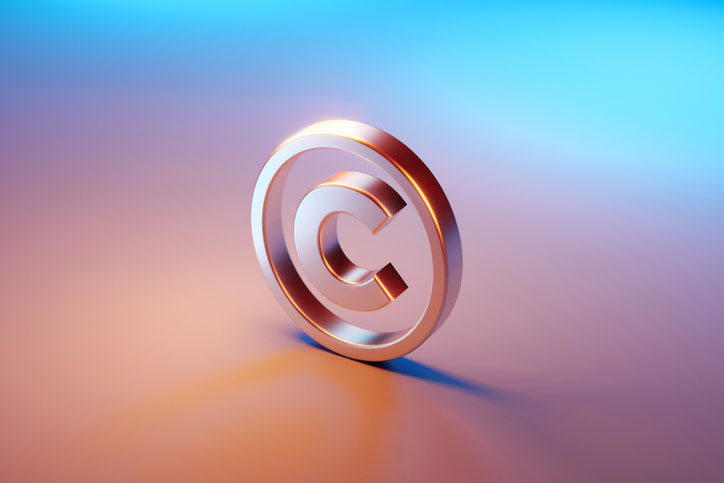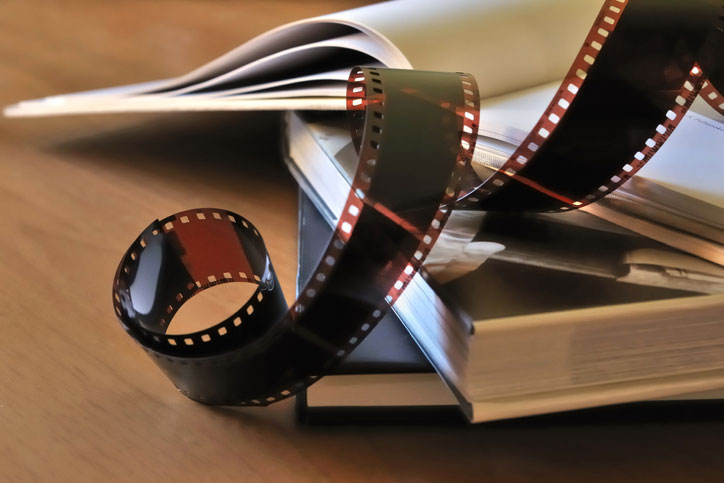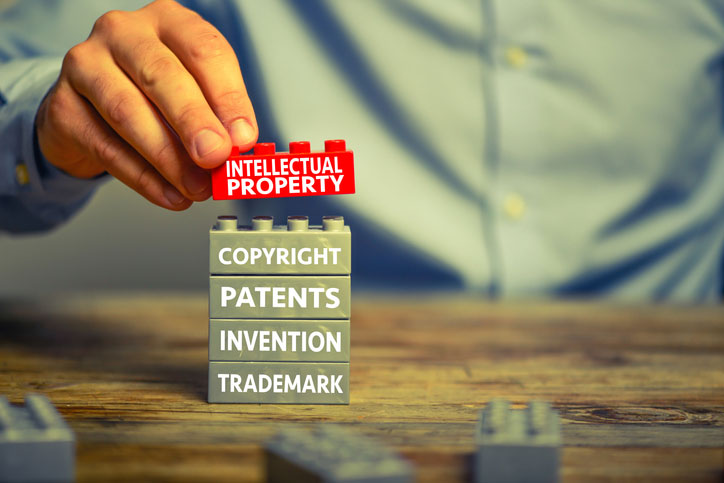 Dr. Walter Park graduated from the University of Toronto, Trinity College with a B.A. in Economics & Statistics in 1983, before going on to earn his M.Phil. in Economics at Oxford University, completing a master’s thesis on Time-Consistency of Government Debt Polices. Dr. Park earned his Ph.D. in Economics at Yale University in 1991, defending a thesis titled Optimal Fiscal Policy in an Open Interdependent World. Since then, Dr. Park has served as a visiting scholar to UC Berkeley, worked for the U.S. Bureau of Economic Analysis under the Department of Commerce, and served on the editorial boards of esteemed research institutes and publishers. Since 2020, he has been with American University in Washington, DC, where he currently serves as Professor and Associate Dean of Graduate Studies with the College of Arts and Sciences, Department of Economics.
Dr. Walter Park graduated from the University of Toronto, Trinity College with a B.A. in Economics & Statistics in 1983, before going on to earn his M.Phil. in Economics at Oxford University, completing a master’s thesis on Time-Consistency of Government Debt Polices. Dr. Park earned his Ph.D. in Economics at Yale University in 1991, defending a thesis titled Optimal Fiscal Policy in an Open Interdependent World. Since then, Dr. Park has served as a visiting scholar to UC Berkeley, worked for the U.S. Bureau of Economic Analysis under the Department of Commerce, and served on the editorial boards of esteemed research institutes and publishers. Since 2020, he has been with American University in Washington, DC, where he currently serves as Professor and Associate Dean of Graduate Studies with the College of Arts and Sciences, Department of Economics.
Copyright matters are pervasive in the life of creators – of books, music, films, paintings, sculptures, software programs, and scientific articles. What do creators own and what do they owe others, if any? What are consumers allowed or entitled to do with creative works, or not allowed? The stakes are high given the immense commercial value of creative works. According to a 2022 report of the International Intellectual Property Alliance, core copyright industries contributed $1.8 trillion in value added to the U.S. economy and accounted for almost 6% of private sector employment in the U.S. The core copyright industries pertain to book publishing, newspapers, sound recordings, motion pictures, radio and television broadcasting, computer software, video games, and periodicals and journals. And these contributions exclude the indirect ones coming from complementary industries, such as the information technology and telecommunications sectors, which target the creative goods market for purposes of providing goods and services that either enhance the enjoyment of creative work (such as audio and video technology) or serve as inputs into the production of creative goods (such as digital tools and recording equipment).
Looming around the creative industries are potential pirates who threaten to appropriate the returns to the creators. While data on piracy are notoriously difficult to compile and analyze, some figures on software piracy are instructive. In 2017, the Business Software Alliance estimated that about 37% of software installed on personal computers around the globe is unlicensed. Piracy rates are as high as 90% in Libya, 89% in Zimbabwe, and 84% in Bangladesh. Even wealthy economies like the European Union and U.S. experience software piracy rates of 28% and 15% respectively.
The creative artist therefore operates under risks – not just the risk of piracy but also legal uncertainty. The copyright system is complex, often lagging behind new technological developments, such as digitization and the emergence of social media. Over the last hundred years, copyright laws and regulations have evolved in patchwork ways that only the cognoscenti – legal scholars and practitioners – have had success comprehending them. The artist must navigate a labyrinth of copyright rules, limitations, and exceptions, on top of the enterprise of producing valuable, fulfilling creative work.
In this brief, I discuss some of the high-level basics of copyright protection, eschewing the details needed to pass the bar exam. I then address the economic rationale and impacts of copyrights, and highlight some of the controversies in the field (otherwise known as research topics to those of us in academia). My main takeaway point is that creative work is a group endeavor and that copyright laws should balance the interests of complementary parties. This viewpoint, I believe, is applicable to both artistic and scientific pursuits.
If you’d like to study economics under professors like Dr. Walter Park who care about the intellectual property rights of writers, artists, and other creators, request information about the online MA in Economics with specialization in applied economics available through the American University College of Arts and Sciences.
Copyrights

Copyrights are a form of property right. A copyright owner acquires exclusive rights over her original literary, dramatic, musical, or artistic work. (Literary works include computer coding.) Her rights are limited in duration – although relatively speaking it is rather long, namely the life of the author plus seventy years. After this period, the work falls into the public domain, and anyone can freely use the work without permission. Until then, the owner (or designated heir) can prevent anyone from commercially exploiting her work, or a work that is substantially similar, without her permission. She also has control over derivative works, namely those that are adaptations of her work.
Copyright protection is automatic once the work is created. The creator need not apply for protection or register her work to acquire the copyright. This is in contrast to an invention, where the inventor needs to apply for a patent in order to protect it. If anything, the creator needs to take some extra steps if she wants to yield her copyrights. For example, the creator can grant for a Creative Commons license, under which there are multiple options, one of which is that the creator can allow others to distribute, adapt, or build upon her work, and use it commercially, subject to the licensee giving her credit for the original work. Other creative commons license options have similar provisions but may exclude derivative works.
While the duration of copyright protection is long, compared to patents and trademark protection, copyright protection is narrower in scope. For example, the term original work means that the work originated with the artist in question, that she did not copy it from someone else. In the extreme case, if someone else independently creates the same work, that person can also enjoy copyright protection and that work would not be deemed infringing.
Copyright protection applies to the expression of a work, not the idea. A famous example is that of Romeo and Juliet versus West Side Story. Both have a very similar theme about star-crossed lovers but represent different ways of expressing the theme. This idea vs. expression dichotomy is useful in scientific research where multiple scholars can come up with the same idea. For example, Charles Darwin and Alfred Wallace both hit upon the theory of evolution. Isaac Newton and Gottfried Leibniz independently developed calculus but expressed it differently. In economics, Robert Solow and Trevor Swan independently developed the neoclassical growth theory model in 1956. Fortunately, legal battles did not bog down any of the aforementioned research.
Economic considerations enter into why copyright protection is long but narrow. Ideally, from the rightsholder’s perspective, copyrights are stronger if the duration is longer and the scope of protection broader. But there are tradeoffs. The ability to preempt independent creations or to exercise rights over ideas would generate enormous transactions costs. It is infeasible to search the existing corpus of copyrighted works to detect infringement over variations in expressions, including minute ones. The situation is worse with “ideas,” an exclusivity over which can create excessive market power. Ideas are fundamental building blocks of artistic and scientific knowledge. Imagine a monopoly right over paintings of a night sky before dawn or over the periodic table.
Copyright also comes with restrictions. For example, fair use permits the public (including other creators) to use portions of a copyrighted work freely without obtaining the author’s permission. Transactions costs can also partly explain the reason for fair use. The cost of tracking down and contacting the author(s) and negotiating fees and royalties just to copy portions of a work can easily exceed the value of using the work, in which case valuable uses of the work would be forgone. Fair use should also be in the vested interest of the author, as the value of her work can be enhanced by citations and the utilization of it by others. Furthermore, the authors are themselves beneficiaries of fair use, as they most likely had built on past work and will likely do so again in future work. Fair use also creates economic value. Entire industries and companies thrive because of it, such as YouTube, TikTok, among others.
Economics

The economic rationale for the existence of copyrights is that knowledge goods, like films, novels, and software programs, are public goods. They are non-rival and non-excludable. A song, for instance, enjoyed by one consumer does not detract from the use by another consumer. Once composed and recorded, it is difficult to exclude other consumers from listening to the song. Returns to public goods are hard to appropriate by a creator in the marketplace. The optimal price is zero considering the low marginal cost of supply, and the accounting profits, if any, derived from a competitive market may be too low to compensate for the cost for creative development and commercialization. Hence, the government grants “monopoly-like” power to a creator over her work for a limited time and with a limited scope so as to earn above-normal returns. Otherwise, few if any creative work would be produced if creators do not earn enough off their creative output to cover their costs. At some point, though, the monopoly distortion due to copyright protection must come to an end. Consumers should be able to access the work at a (lower) competitive price. Follow-on creators should be able to build freely on the work for purposes of generating more knowledge goods for the benefit of society. Hence, at some point, a copyright does expire and the work falls into the public domain. Thus, copyrights tradeoff static inefficiency (i.e., non-competitive provision of a good) in exchange for dynamic efficiency (i.e., investments in innovation).
Another aspect to consider is the economic interdependence surrounding creative activity, or what I would call an innovation eco-system. As pointed out earlier, creators build upon prior work. That is only the tip of the iceberg. The commercialization, production, and distribution of creative works involve multiple complementary actors. For example, book production involves the author and publisher. Publishers also contribute value-added: editing, designing, printing, and marketing, among other things. Copyright protection (and fair use) must factor into the author-publisher relationship, including the appropriate sharing of returns. The publisher also takes risks. It incurs up-front costs, such as giving advances to the author, before launching a book. The subsequent earnings can be positive or negative. Publishers invest in multiple books, so a certain amount of cross-subsidization occurs whereby profits from bestsellers cover the losses of the non-sellers.
The same eco-system operates in other creative industries in the sense that the commercialization of a good involves the coordination of complementary parties. A novel can be turned into a film for streaming or viewing at a theatre, a song turned into a concert performance, and a set of software codes turned into a business platform for customer relations management. Due to the input of multiple parties, the returns to a creator need to be shared with others who make things happen. Other parties that incur upfront investments may require some exclusivity in the market arrangement in order to recoup costs.
Select Debates

A common refrain in the copyright research literature is the tradeoff between creativity and access. Copyrights that are too strong inhibit access to the work; copyrights that are too weak limit incentives to create. Copyrighted works take a long time to enter into the public domain. During the period when a work is under copyright, the work can be expensive to the general public due to non-competitive pricing. The rights holder may be unwilling to license the work widely or may disapprove of the intended use of the work by a party seeking a license. Hence a common criticism of the copyright system is that it impedes the circulation of knowledge. A case I have in mind to illustrate the issues is that of academic publishing, given my academic background. Academics depend heavily on journals and textbooks not only to learn but also to disseminate their research. They can circulate their findings through working papers, but these do not have the imprimatur of peer review.
As with other creative output, textbooks involve a team effort beyond the author. Labor and material costs, and promotional expenses, comprise that effort. Similarly, team effort is behind journal production. Journal articles are relatively easy to copy or pirate. Levels of copyright protection should therefore be proportional to the ease of misappropriation as well as the development costs. Indeed, for journals, publishers often require that authors transfer the copyright to them. The publishers are then responsible for development and marketing.
But because of copyrights, and the market structure of publishers, textbook prices and journal subscription fees tend to be quite hefty. Even a single article from a journal can cost upwards of $39 to purchase. This puts scholarly works out of reach for most poor households and for researchers in poor countries. Academic books and journals are particularly expensive because of the lack of economies of scale. The market size is very small, consisting mainly of a tiny fraction of the world’s population of researchers with advanced degrees. Chances are that only a couple of dozen people have ever read one of my abstruse journal articles. With this small customer base, academic publishers cannot spread their overhead costs as thinly as needed to reduce prices significantly.
How then are scholarly works made affordable? Several ways exist. First, the primary consumers of academic books and journals are employed in universities. University libraries purchase books and subscribe to journals on their behalf. (Government agencies and research institutes can also provide this service to their research staff.) Publishers like Elsevier, Wiley, Taylor and Francis, and Springer Nature produce multiple journals from multiple disciplines. Libraries typically contract to subscribe to the publisher’s journals as a bundle. Faculty and students then access the articles for free. Second, publishers practice the art of price discrimination, charging different prices to different types of consumers depending on their elasticities of demand. Individual subscribers pay less than, say, libraries or research institutes do. Third, open access journals are available. (Some journals provide open access options to authors.) Under open access, the author(s) retain copyrights and the readers access articles for free. How are open access journals then financed if they do not charge readers? Largely, the authors pay the cost, and the authors obtain the funds from their research grants. Grant foundations and agencies do allow open access fees to be budgeted.
While these measures help with affordability, there are gaps. Authors without sponsored research grants may not be able to pay the open access fees. Researchers who are not affiliated with a university or a research organization, or who are affiliated with a university in a developing country whose library cannot afford the site license fees, will be precluded from free access. Price discrimination schemes can only go so far. For price discrimination to succeed, resale must be prevented. This is challenging to do for electronic copies. Indeed, a pirate site called Sci-Hub exists, which is the Napster-equivalent for journal articles. Founded by a programming student from Kazakhstan, the site hosts downloaded copies of published articles and makes them available for free. Copyright authorities have tried to shut the site down, but it manages to re-emerge. How sites like this will impact the publishing industry have yet to be measured.
A 2018 documentary film available on YouTube entitled Paywall has leveled highly charged criticisms against the oligopoly of journal publishing companies. It laments the high prices of academic journals, the high profit margins of publishers, and the possible locking up of scientific knowledge due to monopoly pricing. In addition to advocating for open access journals and viewing Sci-Hub sympathetically, the film deplores the idea that publishers are charging the public for journal articles that were originally created using taxpayer dollars. It is true that a lot of scientific and humanities scholarship is funded by government grants; however, the economics behind that statement are a bit more complex. Not all authors of journal articles have been funded through grants, whether sponsored by industry or the federal government. Such funding, when it occurs, covers research expenses, such as field work, clinical trials, lab assistants, post-doctoral fellows, conference travel, and so forth. The research funds do not generally share in the cost of producing the journals, except those earmarked for open access fees. (The publicly funded grants could stipulate that awardees make the data and research findings available, but this is a different issue.) As mentioned earlier, researchers rarely pay directly for access to journals. Libraries pay on their behalf. Moreover, in reality, journal articles are not the most timely source of new ideas and findings. Given the publication lag – that is, the time it takes for peer review and for articles to appear in journals – researchers are more likely to depend on working papers or presentations at conferences for the most up-to-date knowledge.
That said, some insightful points can be gleaned from the film. First, publishers do benefit because the primary intellectual laborer – the authors – are unpaid. The economist Theodore Bergstrom calls this “free labor for costly journals.” In fact, authors pay the journal oftentimes for the cost of peer review.
Nonetheless, authors do derive non-monetary benefits from publishing an article in a journal, such as reputational enhancement, which improves their chances of promotion and winning prizes and grants.
Second, there is no circular flow between journal sales and research. In other industries, such as the pharmaceutical or energy industry, profits can be ploughed back into R&D. But the profits from academic publishing and the research expenditures by academic scholars are separate and disconnected. For generating a circular flow between them, a topic for future study and debate might be to think about structuring an alliance between publishers and academic networks. The relationship can be in-house or arms-length. Research and publishing are complementary endeavors, so perhaps should their organizations be.
In closing, copyright protection is marked by tensions. It has the capacity to underwrite investments in creative work and commercialization, while posing barriers for public access to the works, whether financial or legal. In any case, access is key to sustaining creative growth and development, and will be the subject of continuing debate. James Joyce’s character, Stephen Dedalus, has the last word:
“There is no such thing as free thinking inasmuch as all thinking must be bound by its own laws. … For my purpose, I can work on at present by the light of one or two ideas of Aristotle and Aquinas. … I need them only for my own use and guidance until I have done something for myself by their light.”
If you’re interested in learning more about the economic implications of copyright law, request information about the online MA in Economics with specialization in applied economics available at American University, where Dr. Park currently serves as Professor and Associate Dean of Graduate Studies with the Department of Economics.






